This post may contain affiliate links. Read our disclosure policy here.
If you’ve ever wondered why your pancakes come out flat, rubbery, or just not fluffy enough, this post shows you how to fix it all so they can look like these!

Jump to:
- What is Wrong with My Pancakes?
- Rubbery Pancakes
- Salty Pancakes
- Gooey in the Middle
- Overmixed Pancake Batter
- Flat Pancakes
- Runny Pancake Batter
- Lumpy Pancake Batter
- Too-Thick Batter
- Burnt Pancakes
- Floury/White Pancakes
- Too-Thick Pancakes
- Tasteless or Bland Pancakes
- How to Make Perfect Pancakes
- How to Fix Pancake Batter & Avoid Fails
What is Wrong with My Pancakes?
I’ve been publishing pancake recipes since 2013, and they’ve been tried (and loved) by millions of visitors. And in the quest to create the best homemade pancakes, I’ve learned a ton about what works, what doesn’t, and how to troubleshoot every pancake problem.
Rubbery Pancakes
Rubbery pancakes happen because the batter was overmixed and the gluten (a protein) in the flour was activated. This often happens when “kids help” and stir too much #beenthere. Sadly, this can’t be fixed, but you can save the batter by adding ¼ cup of milk and turning those pancakes into waffles.
Salty Pancakes
If your baking powder contains aluminum in the ingredients, the metallic aftertaste combined with the salt in the recipe can make your pancakes taste “salty.” You can avoid this by using aluminum-free baking powder. However, if the batter is already prepared, add 2 tablespoons of sugar, wait 5 minutes, and retest.
Gooey in the Middle
Gooey centers typically mean the pancakes were not cooked long enough and were flipped too soon, likely because the bottoms were getting too dark (fix below). Fix this by reducing the heat temperature to medium and, if necessary, running the pan under cold water to reduce the temperature. Re-grease, pour, cook for 2 minutes, waiting to flip when bubbles form and the edges look defined.
Overmixed Pancake Batter
You’ve probably read in every recipe to “avoid overmixing.” This means mixing too much to remove all the lumps, yielding gummy or rubbery pancakes once cooked. Unfortunately, there’s no way to fix it. I recommend adding more milk and turning them into waffles.
Flat Pancakes
Flat pancakes are the result of too much liquid in the batter or not enough baking powder (rarely because it might be expired). You can fix the batter by adding a couple of tablespoons of flour and ½ teaspoon of baking powder, mixing, and waiting 5 minutes before cooking. Or, turn it into waffles.
Runny Pancake Batter
Runny pancake batter happens when too much liquid is added or the flour is under-measured. Fix it by adding a couple of tablespoons of flour at a time, no more than ¼ cup.
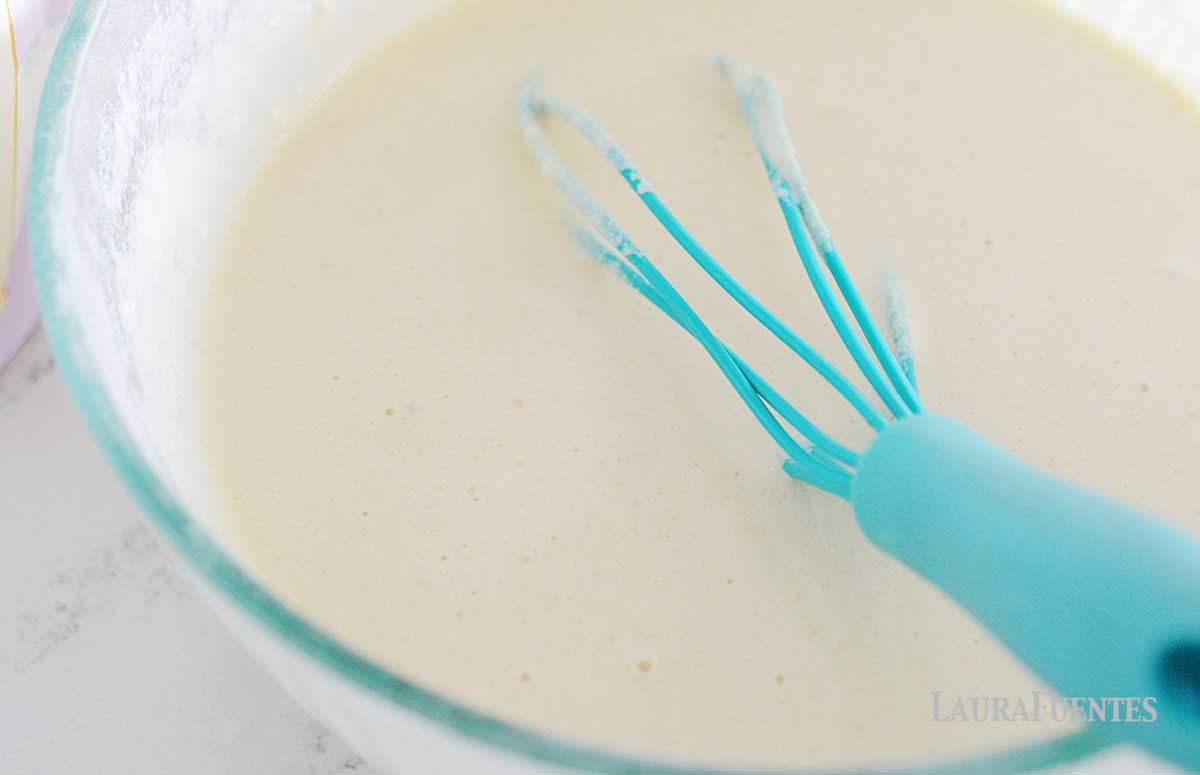
Lumpy Pancake Batter
Lumpy pancake batter can happen if you add mashed bananas to the batter or use an egg replacer. Some lumps are normal; you just don’t want powdery flour in your batter. Fix it by breaking up the lumps with a fork and then mixing the batter once.
Too-Thick Batter
A thick batter isn’t always a bad thing since most fluffy pancake recipes have a thick batter that’s also light and airy. A dense batter happens when too much flour is added. Fix it by adding 1-2 tablespoons of liquid and ¼ teaspoon of baking powder, mix gently, and test.
Burnt Pancakes
Burnt pancakes are a sign that the heat is too high, or if you used butter, it was burned before adding the batter, which stained the pancakes. Fix it by running the pan under cold water to reduce the temperature, setting the temperature to medium heat, and immediately pouring the batter right after greasing it.
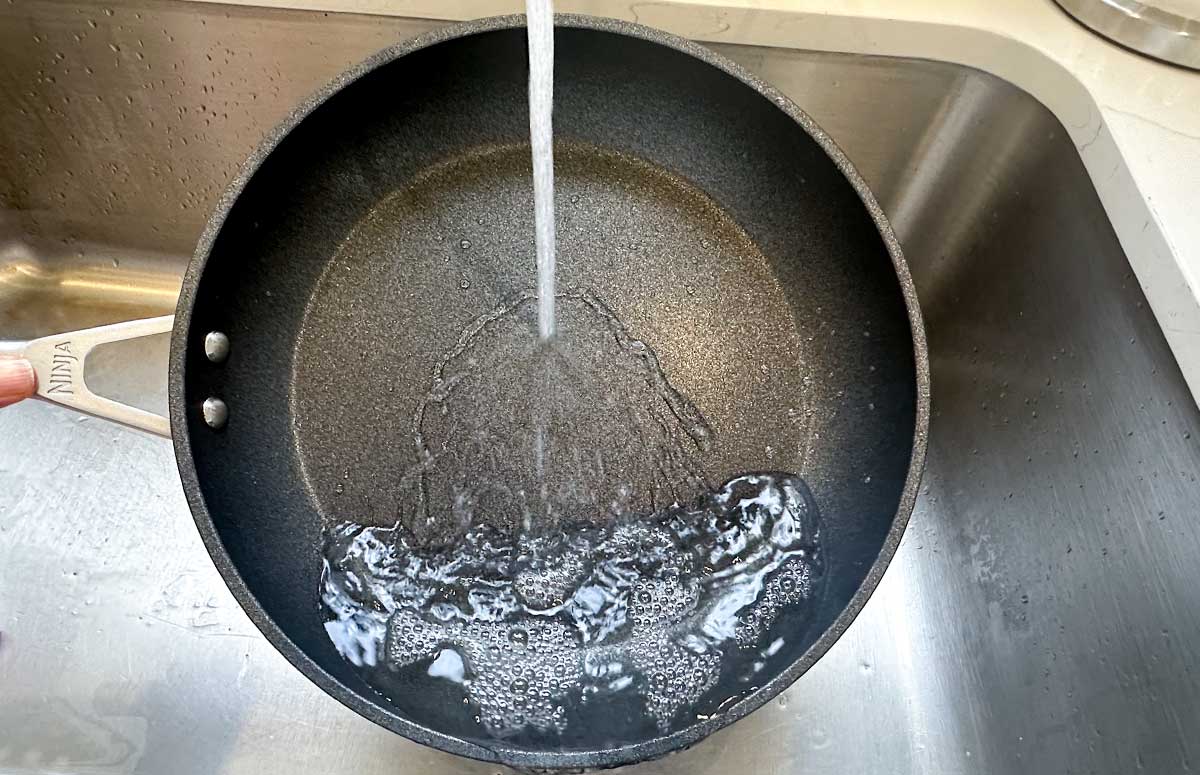
Floury/White Pancakes
If your pancakes are too light, floury looking, or white, it means the heat is too low and the pan wasn’t hot enough before adding the batter. Fix it by increasing the heat to medium.
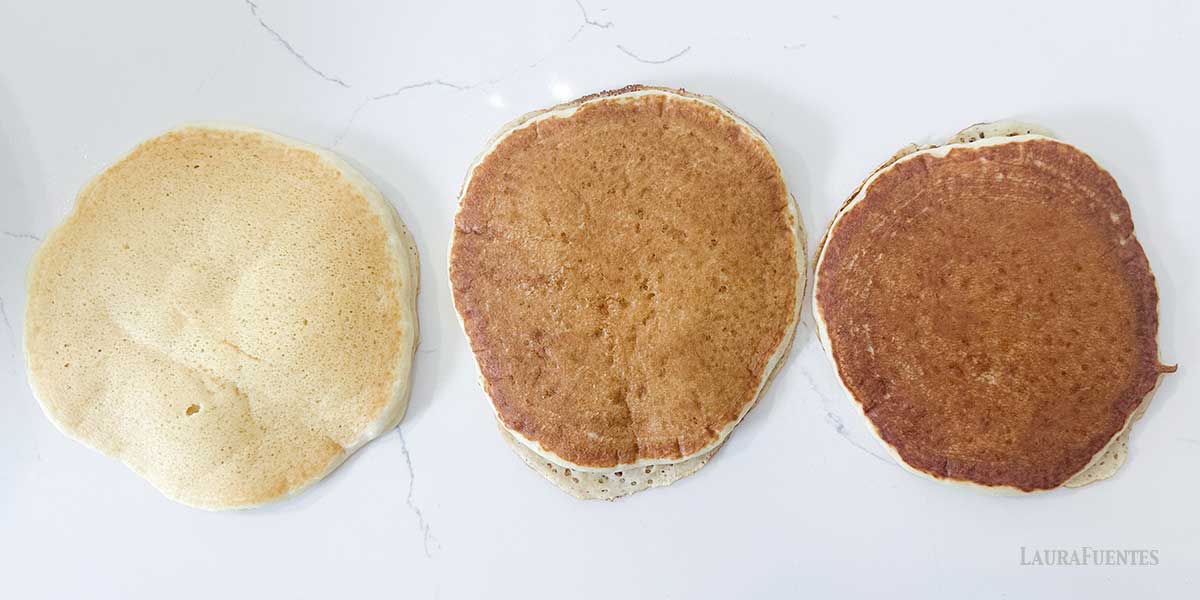
Too-Thick Pancakes
Pancakes sometimes turn out too thick and dense because too much flour was added and not enough liquid and baking powder. This is different than thick fluffy. Fix it by adding 1-2 tablespoons of liquid and ¼ teaspoon of baking powder, mix gently, and test.
Tasteless or Bland Pancakes
Pancakes turn out bland because water was used to make the batter, non-fat milk or thin dairy alternatives, or skipping the flavorings (butter, vanilla, sugar), leaving your batter to taste like plain flour. Fix this by adding 1 tablespoon of melted butter, ½ to 1 teaspoon of vanilla, and 1 tablespoon sugar (one or all).
How to Make Perfect Pancakes
Great pancakes start with a terrific recipe like the one here, which includes the right amounts of flour, milk, baking powder, sugar, salt, milk, eggs, butter, and vanilla. You can also watch the video and avoid pancake fails once and for all!.
How to Fix Pancake Batter & Avoid Fails
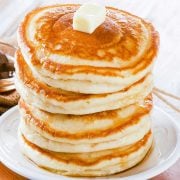
Watch how it’s made:
Ingredients
- 1 ½ cups all-purpose flour
- 2 ½ teaspoons aluminum-free baking powder
- ½ teaspoon salt
- 1 tablespoon sugar
- 1 ¼ cups milk, any
- 1 egg
- 3 tablespoons butter, melted
- 2 teaspoons vanilla extract, optional
Instructions
Make the batter:
- In a large bowl, sift together the flour, baking powder, salt, and sugar. Make a well in the middle and pour in the milk, egg, butter, and vanilla extract (if using it to add flavor). Break up the egg first with a fork, and then begin to combine the flour, working from the outside of the bowl in, until just combined and mostly smooth.
Cook the pancakes:
- Heat a non-stick griddle or large pan over medium-high heat. Once hot, grease, spray, or melt butter on the hot surface. When using an electric griddle, heat it somewhere between 300 and 350F.
- Immediately, pour ¼ cup of pancake batter onto the greased pan. Cook the pancakes for about 2 minutes, until the edges begin to look defined and bubbles form. Flip the pancakes over and cook for another minute on the other side. Avoid pressing down on the pancake after flipping; this will cause denser and chewy pancakes and undercooked batter as it oozes out on the sides. Remove the pancakes from the pan onto a plate and keep them warm while you cook the rest of the batter.
Serve:
- Plate a few pancakes on a plate, top with your favorite toppings and syrups.

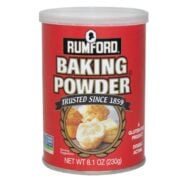
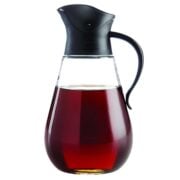
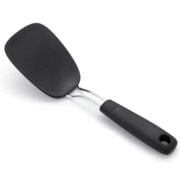
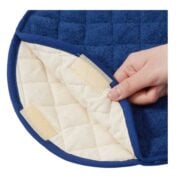
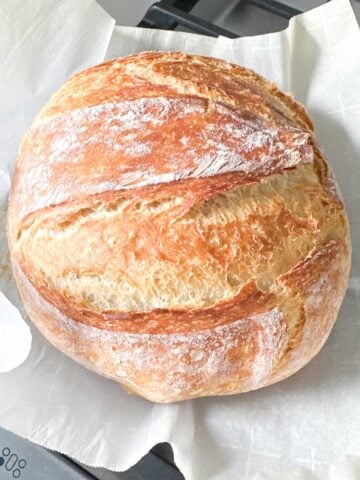

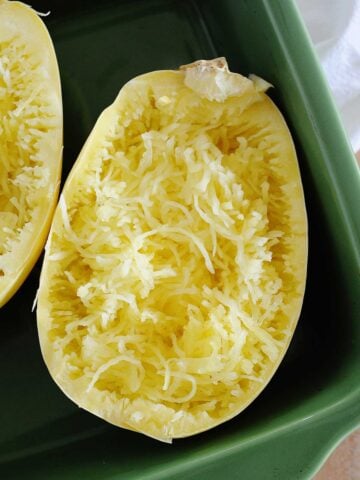
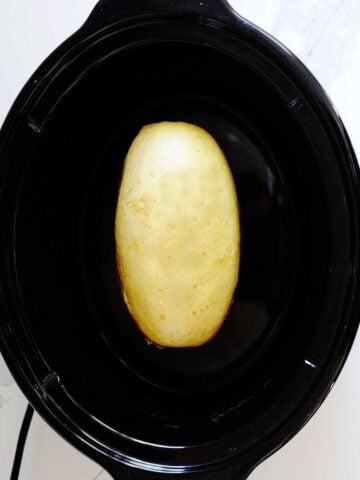
Gloria O'Connor says
Great info on all sorts of pancake question! Now I know why my pancakes are rubbery, over mixing causes the gluten to get too strong, thank you!
Mike says
I had a problem tonite that is not on this list. The Bisquick Ultimate Pancakes – Bisquick with Sugar. oil, BP and Vanilla. They were crumbly and did not stick together very well. The taste was good but the physical presentation was bad. Any ideas?
Laura Fuentes says
Did you omit the eggs?